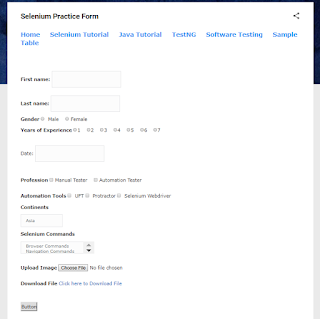What are Functions in Python: A Comprehensive Guide
Table of Contents
1. Introduction to Functions- What are functions?
- Why use functions?
- Defining and calling functions
- Default arguments
- Keyword arguments
- Variable-length arguments
- The return statement
- Multiple return values
- Returning None
- Syntax and examples
- Using lambda functions as arguments
- Summary of key concepts and Techniques
- Resources for further learning and practice
1. Introduction to Functions in Python
Functions are a way to break up large pieces of code into smaller, more manageable pieces that can be reused and called multiple times throughout a program. In this tutorial, we'll cover the basics of functions in Python, including what they are, why we use them, and how to define and call them.
1.1. What are functions?
Functions are named blocks of code that can be called to perform a specific task. They allow you to break up large programs into smaller, more manageable pieces, making your code more organized and easier to read. Functions also help you avoid repeating code, which can save time and reduce errors.1.2. Why use functions?
There are several reasons why you might use functions in your code:Code reuse: Once you've written a function, you can call it multiple times throughout your program, without having to rewrite the code each time.
Organization: Functions allow you to break up your code into smaller, more manageable pieces, making it easier to read and maintain.
Modularity: Functions allow you to build complex programs by combining simple, well-defined functions.
1.2. Defining and calling functions
In Python, you define a function using thedef keyword, followed by the name of the function, and a set of parentheses. Any arguments to the function are listed inside the parentheses. The function body is indented and contains the code that the function will execute.Here's an example of a simple function that takes no arguments and simply prints a message:
scssdef say_hello():
print("Hello, world!")To call this function, you simply write its name followed by a set of parentheses:
scsssay_hello()
This will execute the code in the function body, printing "Hello, world!" to the console.
2. Function Arguments
In Python, we can pass arguments to a function by placing them inside the parentheses after the function name. Arguments are input values that are passed to a function when it is called. We can define functions that take one or more arguments, and we can pass arguments to these functions when we call them.
Here's an example:
pythondef greet(name):
print("Hello, " + name + "!")
greet("Alice")
greet("Bob")In this example, we define a function called greet that takes a single argument name. The function then prints a message that includes the value of name.
When we call the function with greet("Alice"), the function prints "Hello, Alice!". Similarly, when we call the function with greet("Bob"), the function prints "Hello, Bob!".
2.1. Default arguments:
In Python, we can also provide default values for function arguments. If we define a function with default values for some of its arguments, those arguments can be omitted when the function is called, and the default values will be used instead.Here's an example:
pythondef greet(name, greeting="Hello"):
print(greeting + ", " + name + "!")
greet("Alice")
greet("Bob", "Hi")In this example, we define a function called greet that takes two arguments: name and greeting. The greeting argument has a default value of "Hello". When we call the function with greet("Alice"), the function prints "Hello, Alice!". When we call the function with greet("Bob", "Hi"), the function prints "Hi, Bob!".
2.2. Keyword arguments:
In Python, we can also specify function arguments by keyword, instead of by position. This can be useful when we have functions with many arguments, and we want to make it clear which argument is which.Here's an example:
pythondef greet(name, greeting="Hello"):
print(greeting + ", " + name + "!")
greet(greeting="Hi", name="Alice")In this example, we call the function greet with the arguments name="Alice" and greeting="Hi". Because we specify the arguments by keyword, we can pass them in any order.
2.3. Variable-length arguments:
In Python, we can define functions that take a variable number of arguments. This can be useful when we don't know how many arguments a function will need to take.There are two ways to define variable-length arguments in Python: using *args or using **kwargs.
2.4. Using *args:
We use *args to pass a variable number of arguments to a function. The * indicates that the arguments should be collected into a tuple.Here's an example:
pythondef multiply(*args):
result = 1
for arg in args:
result *= arg
return result
print(multiply(2, 3, 4))
print(multiply(5, 6, 7, 8))In this example, we define a function called multiply that takes a variable number of arguments. The function multiplies all of the arguments together and returns the result. When we call the function with multiply(2, 3, 4), the function returns 24. When we call the function with multiply(5, 6, 7, 8), the function returns 1680.
2.5. Using **kwargs:
We use **kwargs to pass a variable number of keyword arguments. The **kwargs syntax allows us to pass a variable number of keyword arguments to a function. The keyword arguments are passed as a dictionary where the keys are the argument names and the values are the argument values.
Here's an example:
pythondef print_kwargs(**kwargs):
for key, value in kwargs.items():
print(f"{key} = {value}")
print_kwargs(name="Alice", age=25, city="New York")In this example, the print_kwargs function takes a variable number of keyword arguments using **kwargs. The function then iterates over the dictionary of keyword arguments using the items() method and prints each key-value pair.
The output of this code will be:
makefilename = Alice age = 25 city = New York
3. Returning Values from Functions
A function can return a value using the return statement. The value returned by the function can be assigned to a variable or used in an expression.
Here's an example:
pythondef add_numbers(a, b):
return a + b
result = add_numbers(3, 4)
print(result) # Output: 7In this example, the add_numbers function takes two arguments and returns their sum using the return statement. The function is called with arguments 3 and 4, and the result of the function call is assigned to a variable result. The value of result is then printed to the console.
3.1. Multiple return values
A function can return multiple values using the return statement. In Python, multiple values are returned as a tuple.
Here's an example:
pythondef get_name_and_age():
name = "Alice"
age = 25
return name, age
result = get_name_and_age()
print(result) # Output: ('Alice', 25)In this example, the get_name_and_age function returns two values: a name and an age. The values are returned as a tuple. The function is called and the result is assigned to a variable result. The value of result is then printed to the console.
3.2. Returning None
If a function does not have a return statement, it returns None by default. None is a special value in Python that represents the absence of a value.
Here's an example:
pythondef say_hello(name):
print(f"Hello, {name}!")
result = say_hello("Alice")
print(result) # Output: NoneIn this example, the say_hello function takes a name as an argument and prints a greeting. The function does not have a return statement, so it returns None by default. The function is called with the argument "Alice". The value of the function call is assigned to a variable result, which is then printed to the console. Since the function returns None, the output is also None.
4. Conclusion:
In Python, functions play a fundamental role in organizing and modularizing code. They allow you to break down complex tasks into smaller, reusable components, making your code more readable, maintainable, and efficient. Throughout this tutorial, we explored various aspects of functions in Python and learned how to define functions, pass arguments, and return values.









.png)









Comments
Post a Comment